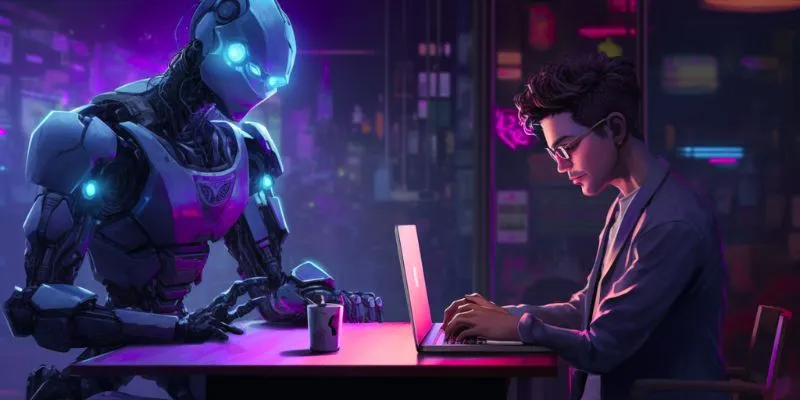Graphic design has evolved much beyond paper, rulers, and sketchpads. The design world today is nearly unrecognizable from that of a decade ago, and that’s significantly because of artificial intelligence (AI) and automation. These tools have totally redefined the way creatives operate, simplified processes, inspired fresh kinds of creativity, and allowed high-quality design to be made more accessible than ever.
Designers now work side-by-side with intelligent tools that can generate layouts, pick color schemes, and even suggest typography options. While some feared that AI would replace human designers, what we’re seeing instead is a collaboration—a creative partnership. And much of this transformation is made possible by professionals who sharpen their skills at a Graphic Design Classes in Chennai, blending traditional design fundamentals with future-ready tech knowledge. Let’s get into the big ways graphic design has changed with AI and automation—and why this change is one of the most thrilling things to have happened to the creative industry.
AI-Powered Tools: Co-Creators, Not Replacers
Those were the days when designers had to do all the cropping, aligning, and retouching by hand. Nowadays, design software based on AI can detect objects, remove backgrounds, and even retouch photos within seconds. Take Adobe Sensei, Canva’s Magic Resize, or Figma’s AI plugins for instance—they leave the hard work behind so that designers can concentrate on the creative broad strokes.
But not only do these tools accelerate the process, they also inspire creativity. Need some new ideas for a logo? AI will come up with dozens of options in seconds. Want to try out varying font combinations or color schemes? Machine learning software can present combinations that are aesthetically pleasing and statistically sound.
Also Check: graphic design influence consumer behavior
Automation and Efficiency in Design Pipelines
Graphic design previously entailed a great deal of repetitive and time-consuming work—such as formatting assets for various platforms, resizing pictures, or implementing consistent branding on hundreds of slides or pages. With automation, all of this is achieved in minutes.
Automation-driven design systems provide consistency and efficiency. For instance, businesses can create libraries of branded elements—logos, typography, templates—that are automatically applied to marketing pieces. That leaves less time to double-check hex codes or font sizes, and more time to hone the message.
Automation is especially useful for corporate and agency design teams that work on high-volume output. Experts working in these situations tend to turn to a Training Institute to maintain an edge on automated workflows, learning how to implement design systems and become adept at version control for shared design tools. Motion graphics have emerged as one of the most powerful tools.
Design Democratization: Creativity for All
Another amazing change AI and automation have introduced to the industry is democratization. You don’t need to be a Photoshop master to design a social media post, presentation, or flyer anymore. Tools like Canva, Visme, and Adobe Express bring design to non-designers.
Templates, auto-resize functionality, drag-and-drop features—these features enable anyone with a little bit of creative eye to craft something professional-looking and pro-level. Sure, some ideologues may smirk, but really, this change elevates everyone’s standards so that high-quality visuals are expected rather than a nicety.
This democratization requires designers to upskill in order to differentiate themselves. Going through a UI UX Designer Course in Chennai can assist aspiring and seasoned creatives in differentiating themselves by acquiring sophisticated design principles, branding techniques, UX/UI, and how to transcend template-based designs.
UX and UI: Data Meets Design
AI has also brought graphic design closer to the realm of UI UX design. Aesthetic appeal for websites and apps is no longer sufficient—designing for digital spaces is now about how people engage with them. And with AI, designers have real-time user behavior data to make informed decisions.
Heatmaps, click-through rates, A/B testing results—all this data can be synthesized by AI to suggest design improvements. For example, if users aren’t clicking a CTA button, AI might recommend changing its color or position. This kind of insight was unthinkable a few years ago.
Branding in the Era of Personalization
Personalization has become a marketing necessity, and AI is one of the prime enablers of that. Rather than fixed brand experiences, businesses are now producing dynamic, personalized content that adjusts to every viewer. That’s a gigantic change for graphic designers, who now have to think in terms of design systems, modular content, and flexibility. Knowing the correct tools is the first step toward creating masterpieces.
It’s not merely a question of designing a single hero image—it’s designing a system of pieces that are able to mix and match user data. And when you introduce automation into the equation, variations can be authored and deployed in scale.
AI-Driven Creative Brainstorming
Brainstorming has always been an important part of the design process, but AI software is now changing the way we do it. Software such as Midjourney, DALL·E, and RunwayML enables designers to submit prompts and gain dozens of visual results in a matter of seconds. These are usually employed as mood boards or inspiration for more detailed work. Rather than looking at a blank screen, designers can start their work with visual ideas that guide the concept. These instruments aren’t replacing the sensibility of man—they enhance it. They’re more like a turbocharged sketchbook.
Once more, the worth is in understanding how to employ these tools mindfully, and that is where an Artificial Intelligence Course in Chennai comes in. From prompt engineering to AI image post-processing, the appropriate training can turn these tools into a real creative treasure. The emergence of AI and automation hasn’t decreased the graphic designer’s role—it’s increased it. Graphic designers now have more tools, insights, and possibilities at their disposal than ever before. They’re not merely visual stylists; they’re strategists, technologists, and collaborators in the digital landscape.
